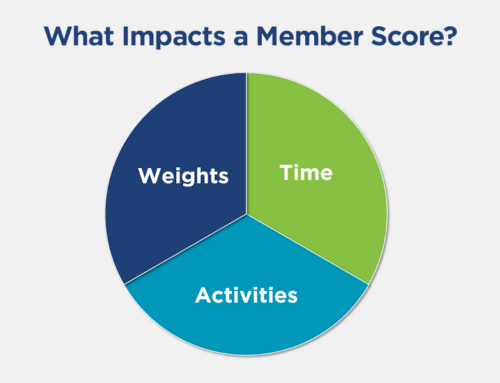While the customer journey isn’t a new concept, the science behind customer journey analytics is still relatively new, but is slowly gaining popularity. By 2018, 60% of organizations will be adopting customer journey analytics into their organizational strategy.
As technology changes exponentially, you expect to obtain information and make purchases and decisions even faster than ever before. For businesses, that’s a demand that they need to keep up with or they risk losing customers. The same can be said for your association.
In order to stay relevant in the eyes of your existing members and to attract prospective members, you need to have a customer journey analytics plan that makes their customer journey easy, intuitive, and provides an exceptional experience. The journey that you create for customers shapes the customers view of your organization.
Here are 4 essentials to keep in mind before you implement a customer journey analytics strategy at your association.
1. Customer journey mapping vs. customer journey analytics.
Both of these terms might seem similar, but each one has a different meaning so it’s important to have an understanding of them because they go hand-in-hand.
A customer journey map allows you to see things from the customer’s perspective, and the different touchpoints they interact with at your organization. It focuses more on the high-level macro-journey and tells more of a story. However, it doesn’t hone in on data like customer journey analytics does.
According to McKinsey, customer journey analytics is a combination of journey mapping, customer-behavior analyses, channel-opportunity scans, and machine-learning algorithms creates a picture of the end-to-end customer journey. It’s focuses on the micro-level journeys and is more comprehensive. Customer journey analytics can show you that your members take different paths in a variety of channels to get to the end goal. And most importantly, it’s based on data.
Think back to your last Annual Meeting. What was the process someone took to attend your conference? Were there touchpoints that led to their decision to register? Did that person see your Annual Meeting in an online ad, blog post, or email? Perhaps they learned about it from a colleague? And what happened after the event? One would hope they plan to attend again next year based on their touchpoints. That’s the power of a customer journey. Knowing those touchpoints help you make data-guided decisions and inform your overall organization’s strategy.
When you combine both the analytics and the mapping, you have a powerful combination that can transform your organization because you have a deeper understanding of the customer-journey and it gives you the ability to predict future behavior as well.
2. Visualization is key.
Once your team maps out a customer journey with the goal of converting your leads and building brand loyalty, you need a way to present the story in a visual way. Often times, it’s easier to grasp a concept or idea when it’s shown in a visually appealing way. Seeing data story empowers your team to make data-guided decisions because it’s easier to spot trends and make decisions faster and more confidently. You can also forecast what can happen in the future and make adjustments to the customer journey. Your data story should also help your team better align with your organization’s overall goals or re-prioritize them if needed.
Consider these 3 factors when developing a data story:
- What’s the visual going to look like?
- Who is your audience or stakeholders?
- What decisions can be made to improve the customer experience?
If data isn’t present in your story, then all you have is a picture and that’s not enough to determine how best to optimize the customer journey.
3. Break down the silos.
Most people tend to evaluate data in silos because it’s scattered in different systems and channels. When data isn’t in a central location that’s accessible to everyone, you don’t have an accurate representation of the customer journey. Everyone is interpreting it differently because they don’t have all the data just certain touchpoints.
Customer journey analytics is not a one-department project. It’s an organizational-wide effort that everyone should be involved with. While one department might be focusing on the touchpoints, everyone should have an understanding of the journey a member takes and what it’s informing you to do.
Breaking down the silos won’t happen overnight or even in a week. It’s a process that will take time because you have to shift your team’s mindset and how they interpret data as a whole.
4. Get employee advocacy.
Getting staff-wide buy-in to the idea of customer journey analytics is a challenge depending on the organizational culture. If employees are typically slower to adapt to change and embracing new technology, then you have to build a solid case to prove implementing a customer journey analytics plan is worthwhile and necessary for sustaining your organization.
Some of the ramifications of having a poor customer journey include but are not limited to:
- Customer defection
- Negative reputation
- Higher call volumes
- Lost sales
- Lower employee morale
As you develop your customer journey analytics plan, involve the key stakeholders, particularly the ones that are enthusiastic about the idea. They are the “champions” who support the plan and ensure that it’s set up for success long after it’s implemented.
When it comes to gaining buy-in from the rest of your staff, tailor your case by using terms they understand and relate to. Avoid using technical jargon if you’re not speaking with a technical group. Demonstrate how customer journey analytics empowers them to make better decisions because they have data to guide them.
Another way to transform your association into a more data-guided culture is to incorporate it into your onboarding process for new hires. By instilling that mindset from the get-go, you contribute to the change in the long-run.
With customer journey analytics in place, you can differentiate yourselves from other organizations and deliver an excellent customer experience that keeps your members coming back for more. It has the power to transform your organization, but in order for that to happen, you need to change your traditional association approach to one that is customer-centric.
And over time, the more data you acquire from your analytics, the more equipped you’ll be to adjust your customer journey to give your members what they need when they need it more effectively.
Ready to plan?
Contact us at [email protected] or (800) 920-9739 to discuss your association’s customer journey analytics plan.



